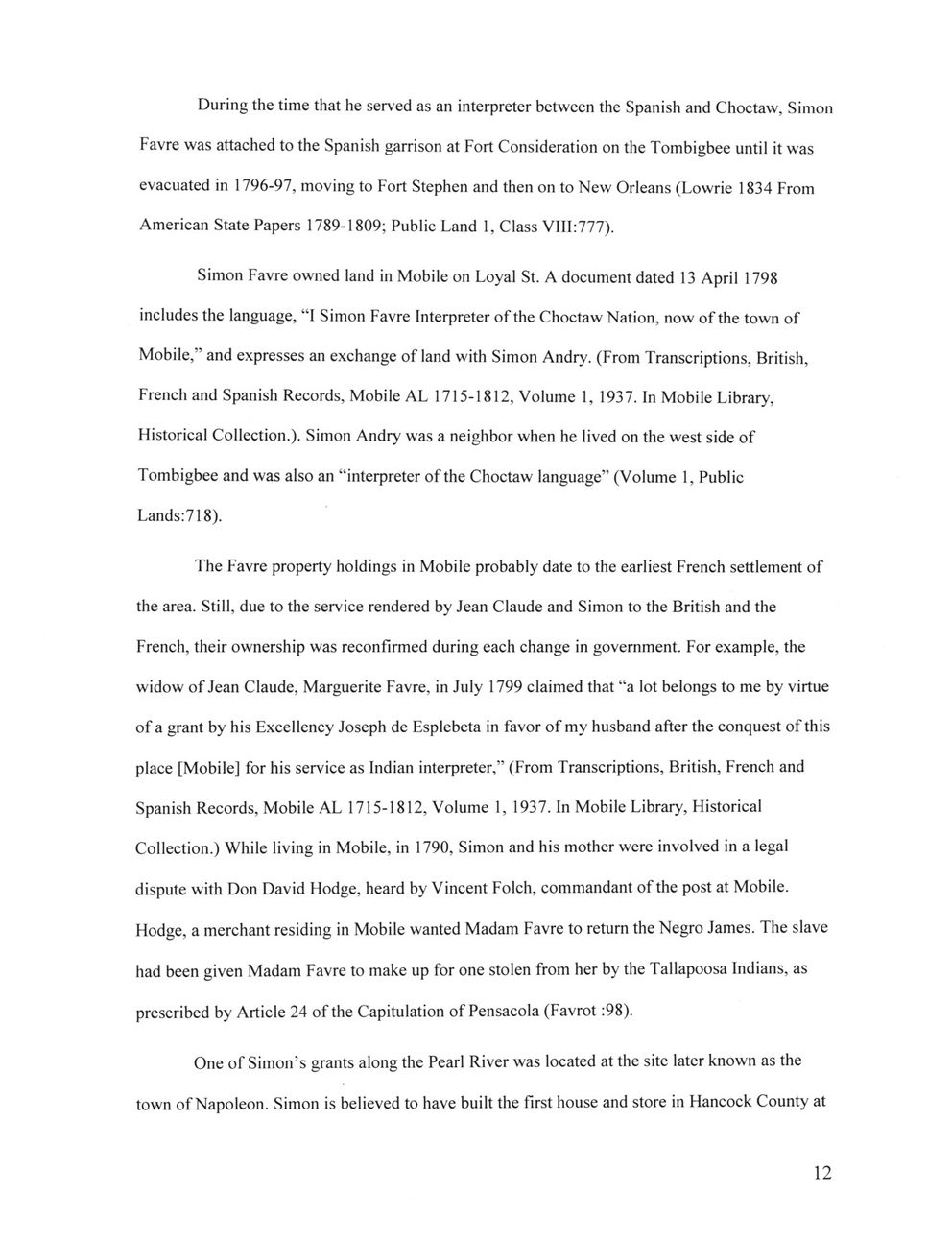This text was obtained via automated optical character recognition.
It has not been edited and may therefore contain several errors.
During the time that he served as an interpreter between the Spanish and Choctaw, Simon Favre was attached to the Spanish garrison at Fort Consideration on the Tombigbee until it was evacuated in 1796-97, moving to Fort Stephen and then on to New Orleans (Lowrie 1834 From American State Papers 1789-1809; Public Land 1, Class VIII:777). Simon Favre owned land in Mobile on Loyal St. A document dated 13 April 1798 includes the language, ?1 Simon Favre Interpreter of the Choctaw Nation, now of the town of Mobile,? and expresses an exchange of land with Simon Andry. (From Transcriptions, British, French and Spanish Records, Mobile AL 1715-1812, Volume 1, 1937. In Mobile Library, Historical Collection.). Simon Andry was a neighbor when he lived on the west side of Tombigbee and was also an ?interpreter of the Choctaw language? (Volume 1, Public Lands:718). The Favre property holdings in Mobile probably date to the earliest French settlement of the area. Still, due to the service rendered by Jean Claude and Simon to the British and the French, their ownership was reconfirmed during each change in government. For example, the widow of Jean Claude, Marguerite Favre, in July 1799 claimed that ?a lot belongs to me by virtue of a grant by his Excellency Joseph de Esplebeta in favor of my husband after the conquest of this place [Mobile] for his service as Indian interpreter,? (From Transcriptions, British, French and Spanish Records, Mobile AL 1715-1812, Volume 1, 1937. In Mobile Library, Historical Collection.) While living in Mobile, in 1790, Simon and his mother were involved in a legal dispute with Don David Hodge, heard by Vincent Folch, commandant of the post at Mobile. Hodge, a merchant residing in Mobile wanted Madam Favre to return the Negro James. The slave had been given Madam Favre to make up for one stolen from her by the Tallapoosa Indians, as prescribed by Article 24 of the Capitulation of Pensacola (Favrot :98). One of Simon?s grants along the Pearl River was located at the site later known as the town of Napoleon. Simon is believed to have built the first house and store in Hancock County at 12

Favre The-Favre-Family-in-Hancock-County-12